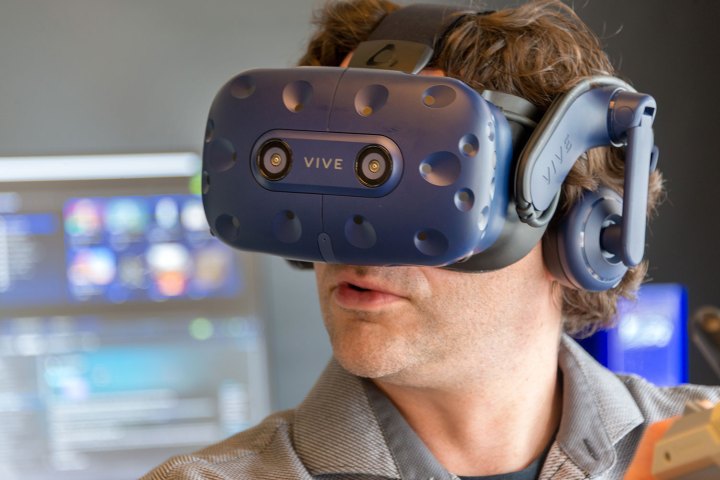
Although the HTC Vive Pro didn’t launch with support for augmented reality, HTC has now made it possible for the device’s front-facing cameras to be used for exactly that. Still in their very early stages, the new tools for the Vive Pro will let developers use the headset to create and test augmented reality experiences and applications.
The purpose of the Vive Pro’s front-facing cameras has been somewhat non-specific since the headset’s original announcement. However, there were hints of it being used for additional controller tracking to help avoid any issues of occlusion. Now, though, with the debut of the Vive SRWorks SDK, the cameras are suddenly capable of a whole lot more.
The new tool leverages the cameras for depth sensing, pass-through visuals, and for 3D reconstructions, as per RoadToVR. Together this make it so that the Vive Pro can take some measure of the outside world and combine it with virtual elements, effectively letting developers create a blend of AR and VR experiences with the same piece of equipment.
In one demo already showing the potential applications for the Vive Pro’s blend of virtual and augmented reality, we see a developer manipulating digital objects within their own real-world test environment and an entirely virtual one. They can step in and out of both worlds through a customizable portal, and blur the lines between the real and the digital.
Although the resolution of the Vive Pro’s front-facing cameras does leave a lot to be desired — making it seem unlikely that a VR gamer would want to use them for running consumer apps — the Vive Pro does give developers a single device with which to develop both VR and AR applications. That saves on hardware expenditure, but also makes it so that apps designed with both digitall -enhanced worlds in mind can be worked on side by side without the developer removing their headset.
It could also be a useful feature for gamers who want a quick snapshot of the outside world, or want to make sure they don’t step on an errant pet or loved-one’s foot.
The SRWorks SDK is only available in beta for now, though its development is ongoing and could see expanded features and increased stability in the weeks and months to come.



